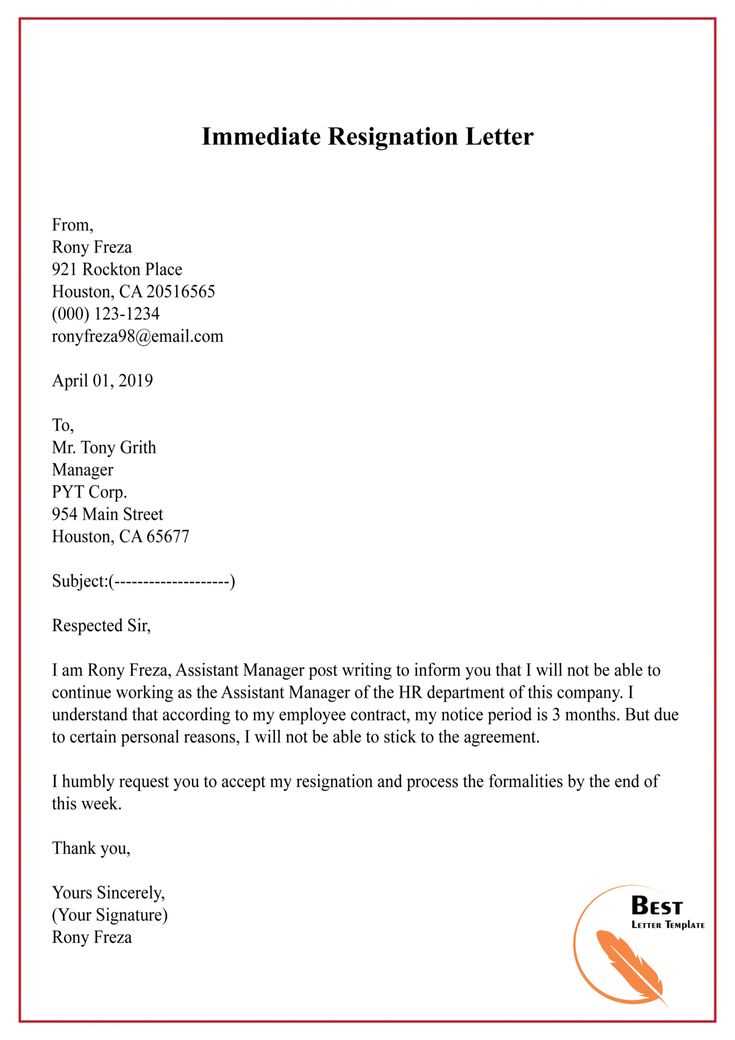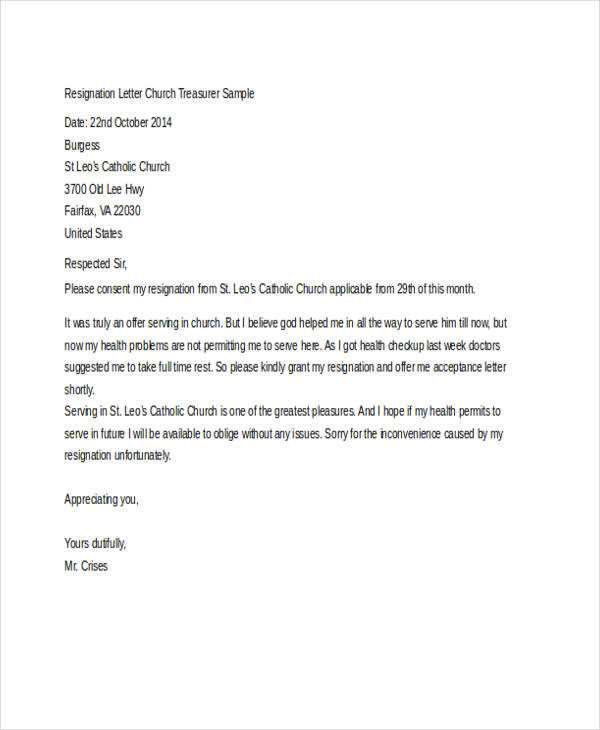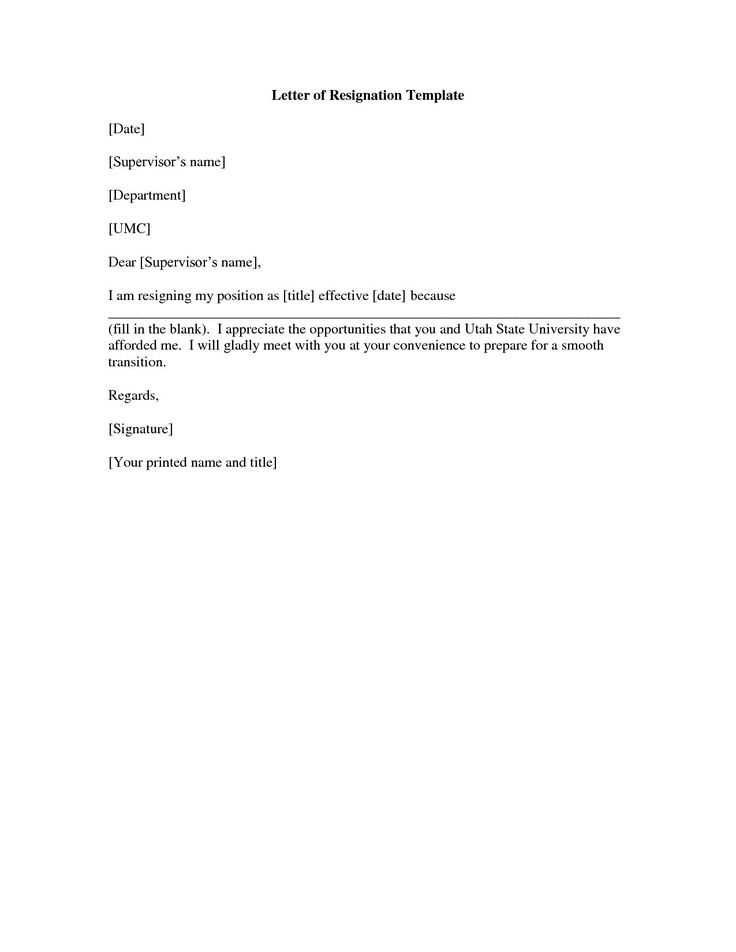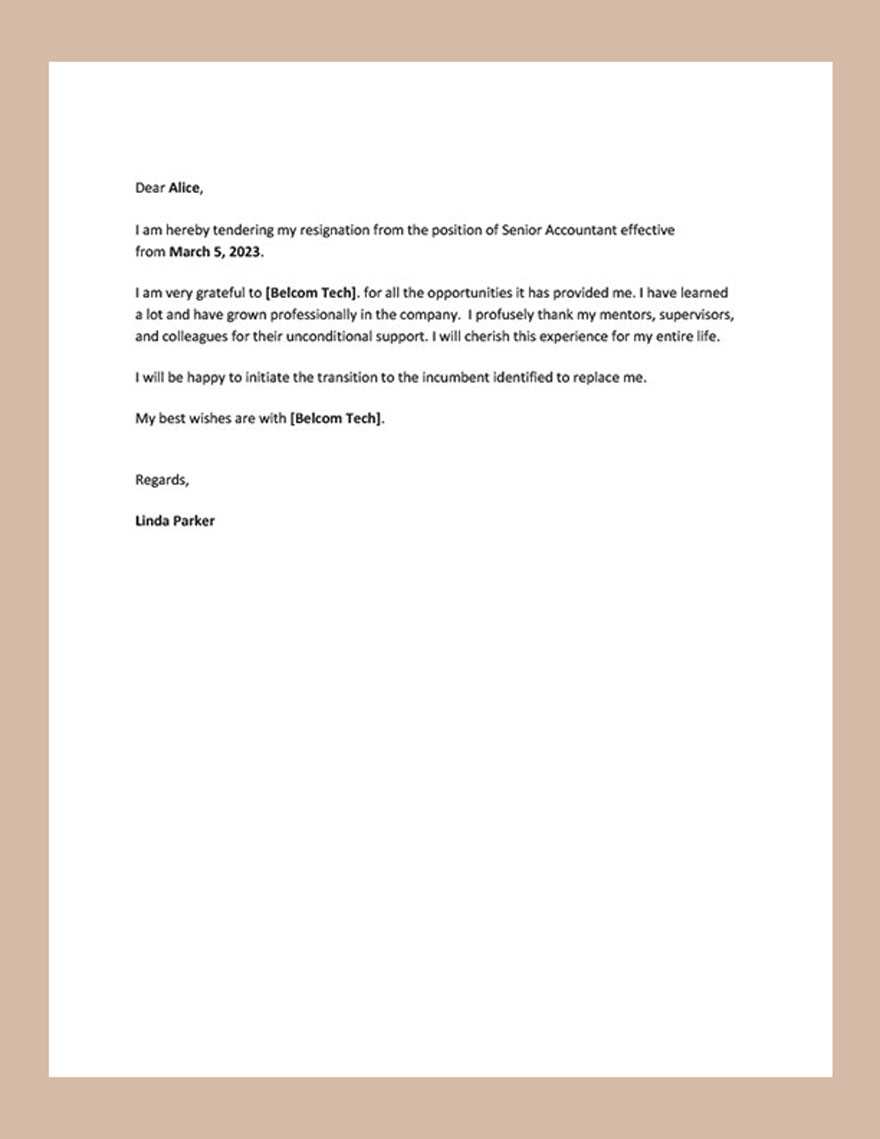Free Letter of Resignation Template for Your Convenience

When leaving a position, it’s important to express your departure in a clear and professional manner. This document helps guide you in crafting your notice, ensuring it remains respectful and concise. A well-written form helps you communicate your decision, preserve relationships, and leave on positive terms.
Structure of a Professional Departure Notice

To make the process easier, structuring your departure message can ensure that all necessary information is included. Here are the key components to consider:
- Introduction: Briefly state your intention to step down from your role.
- Effective Date: Clearly mention the date when your departure will take place.
- Gratitude: Acknowledge the opportunities and experiences you gained during your time in the role.
- Final Thoughts: Offer your willingness to assist in the transition process.
Why Structure Matters

Having a clear structure in your resignation ensures that your message is both professional and well-received. Avoiding overly complex language or unnecessary details makes your notice easier to read and understand.
Tips for Submitting Your Notice
Once your document is prepared, it’s essential to send it in a timely manner. Ensure it’s delivered to the appropriate person, and if possible, provide ample notice. A professional approach shows respect and helps maintain positive relations.
Essential Steps for Crafting a Professional Departure Notice
When preparing to step away from a position, it’s vital to ensure your departure is communicated in a clear, respectful manner. The process involves several important elements that contribute to a smooth transition and help maintain positive professional relationships.
Start with a Clear Intent: Begin by outlining your decision to leave the role. It’s essential to be straightforward yet respectful in expressing your intention to part ways.
Include the Date of Transition: Clearly state the date on which you will be leaving. This ensures both parties are aware of the timeline and can plan for any necessary transitions or handovers.
Express Appreciation: Acknowledge the opportunities you’ve had while working in the position. Showing gratitude fosters goodwill and leaves a positive impression as you move on to new endeavors.
Key Elements to Include
- Gratitude – Always thank your employer for the experience and opportunities.
- Transition Offer – Make yourself available for any transitional duties or training.
- Professional Tone – Keep the tone of your message respectful and professional throughout.
Best Practices for Submission
Once your message is prepared, it’s crucial to submit it with care. Ensure you deliver it through the appropriate channels, whether by email or in person, and allow ample time for your employer to process the information. This ensures a smooth exit and preserves your professional reputation.
Benefits of Using a Structured Approach
Having a structured format for your notice helps simplify the process and ensures you don’t overlook any important details. By using a proven format, you can focus on the key points without worrying about the structure, saving time and effort.
Common Mistakes to Avoid
- Rushing the Process – Always allow enough time to think through your message and review it before submission.
- Being Overly Casual – Maintain a professional tone even if you’re on friendly terms with your employer.
- Failing to Give Adequate Notice – Providing sufficient time for the transition is crucial for a successful exit.
Timing Your Departure

Choosing the right time to leave is crucial. It’s important to consider any ongoing projects, your team’s workload, and the company’s needs. Departing at the right time allows for a smoother transition and reduces the impact of your absence.